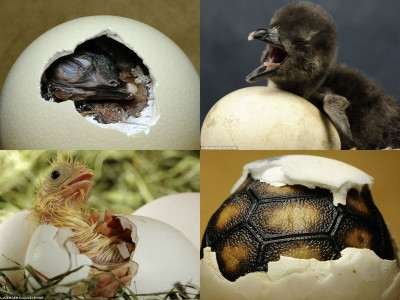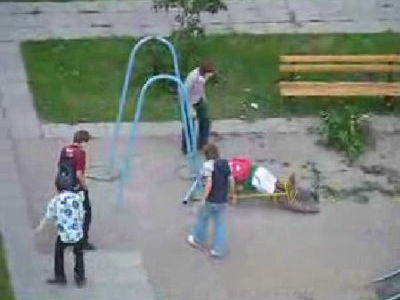Why don't bird nests get covered in poo?

Many birds make nests, and many birds lay eggs in their nests and raise them. The chicks stay in the nest all the time until they can fly by themselves, but there is no 'poo' in the nest and they are always in a beautiful state. Questions about bird breeding such as 'Why doesn't the bird's nest become poopy?' are explained in a movie by American news media Vox.
Many birds build nests and raise chicks in nests.

Growing chicks never leave their nests. One of the questions that comes up is 'why aren't bird nests poopy?'
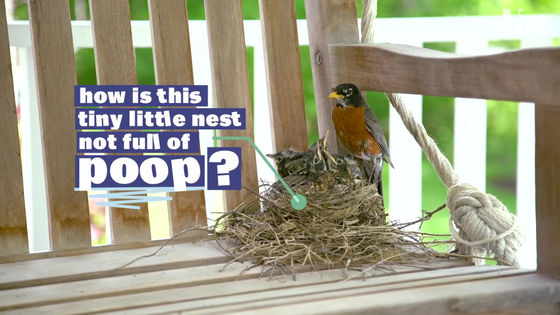
This question is explained by Professor Michael Murphy, an ornithologist at Portland State University who specializes in bird ecology and
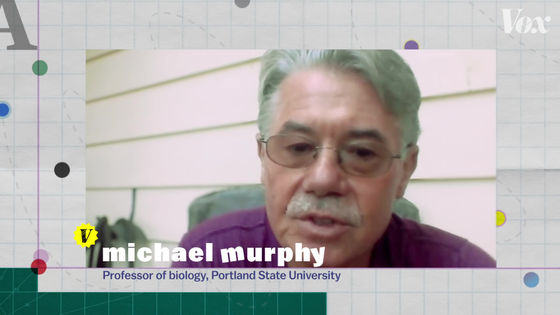
A Vox reporter asked Professor Murphy about the ecology of a bird nesting on a bench near his eaves. Below is the egg that the little bird was laying.
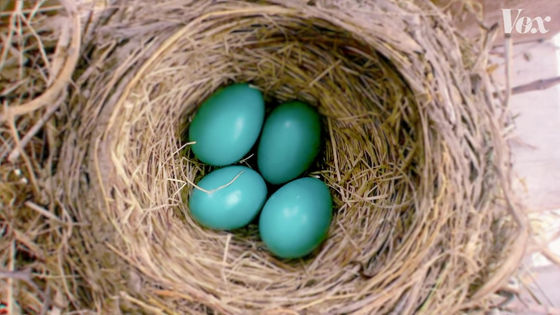
According to Murphy, the little bird is 'American Robin'.
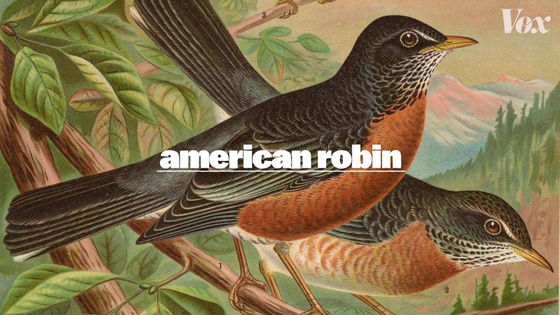
The northern thrush is a migratory bird with an orange-red chest, and it migrates to cool Alaska in the spring and warm Mexico in the winter.

First of all, about this egg, 'Why are you blue?' said a Vox reporter.
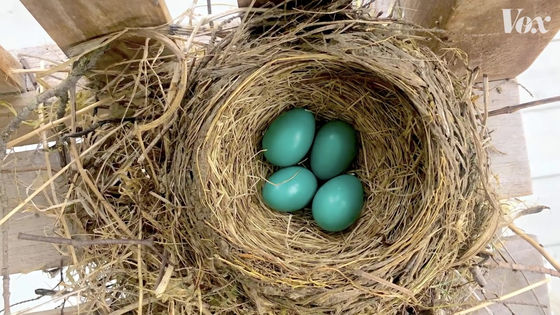
According to Professor Murphy, the blue color of the northern pinwheel eggs is due to the 'pigment' derived from the mother bird. This pigment is the same as that that produces the blue color of bruise, and although it is known that it has the effect of hardening the shell of the egg, it is still under discussion about the detailed reason.
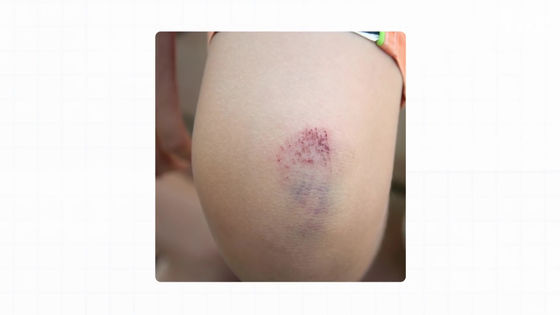
The northern thrush will heat and incubate this blue egg for 14 days.
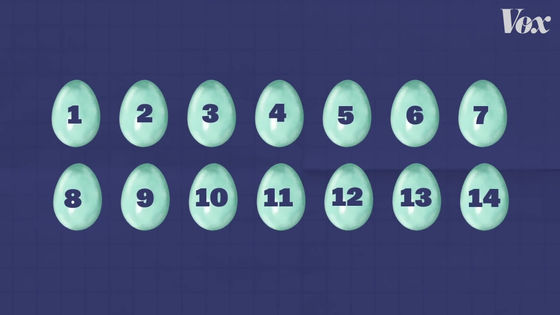
The hatched chicks grow up in the nest while being fed by the mother bird...

Approximately 14 days after hatching, chicks begin to learn to fly out of their nests and fly. You cannot fly like an adult at the beginning of the flight, but you will be able to fly well in a few days.
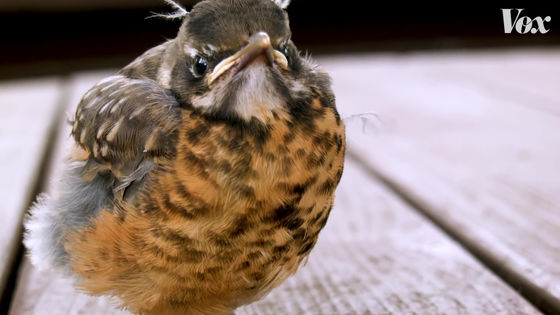
The chicks growing in the nest usually fall asleep like this.
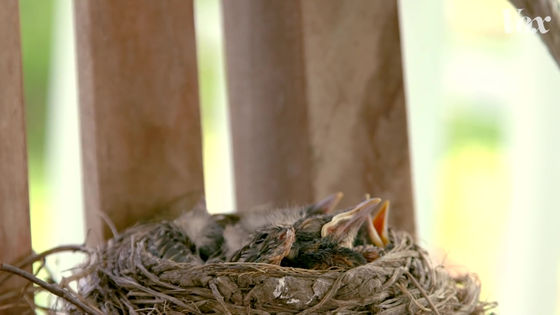
However, when it detects the sign of the mother bird, the chick wakes up, and at the same time when the mother bird descends into the nest, it stretches greatly and begs for food. The feed that mother birds give to chicks includes earthworms, bees, worms, and flies. Hina grows fast and grows by eating a large amount of food.
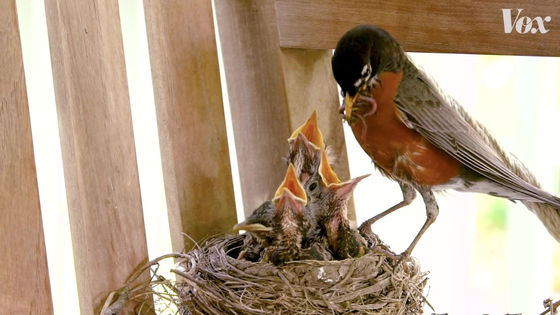
If you eat a lot of food, you should have a lot of poop. However, the nest of the northern thrush remains clean.
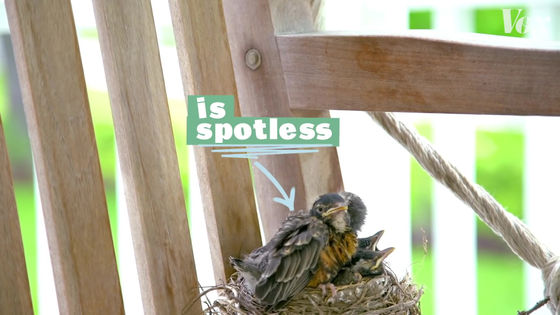
Yellow-throated chicks do a lot of poo, but not in their nests. The Thresher Thrush poo in the mouth of its mother bird. Below is the moment when the mother bird takes the poo from Hina's bottom.

Mother birds can be thrown outside with a poop, or sometimes eaten as they are.
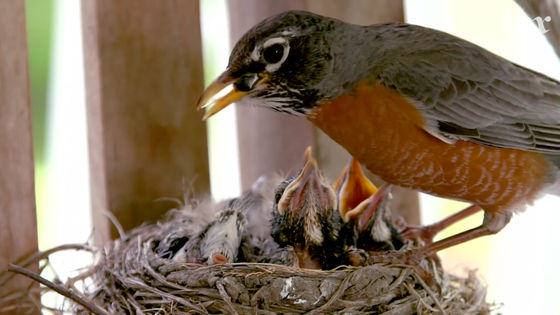
The reason why mother birds can carry their poops is because the poops produced by the chicks are wrapped in the mucous membrane called 'Fecal sac'. This 'feces' does not cause the chicks to poop or stick to the nest.
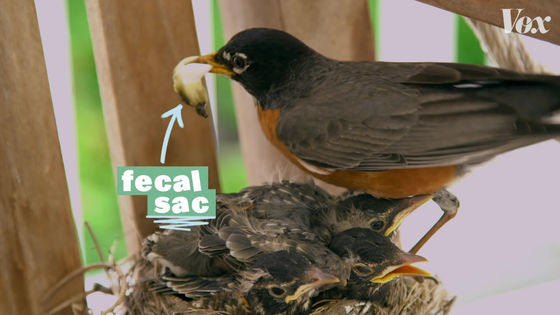
The mother bird is at the edge of the nest and waits for Hina to give her poop.

Professor Murphy commented, 'When I see a mother bird eating poo, I feel a little uncomfortable in my stomach.' While commenting on the question 'Why don't you throw all your poo?' According to Professor Murphy, there are theories that 'there are some important nutrients contained in the feces sac' and there is a theory that 'simply ingest the calories and water contained in the feces sac'. ..
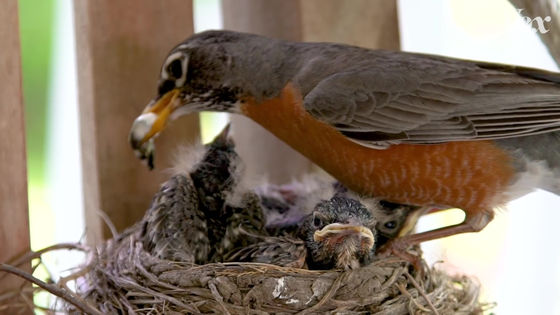
On the other hand, this behavior is not common to all birds.

Returning to the thrush, the chicks grow 12 to 14 days after hatching until the nest is fully packed. Then it's time to learn that the chicks are out of the nest. By this time, the chicks may still return from the nest, but 60% of the chicks will fall when the chicks move in and out.
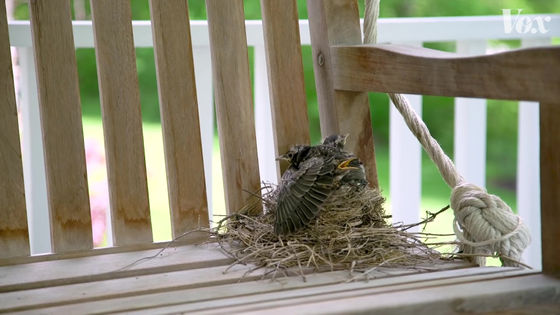
In the meantime, the chicks leave the nest, become parents in about a year, and then turn to the side of raising children. That's how life circulates.

Related Posts:



